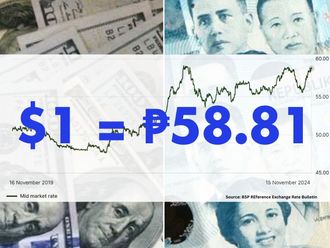Colombo: Sri Lanka’s tea industry is deeply divided over plans to boost earnings by importing cheaper leaves for blending and re-export, over fears the changes could water down the “Pure Ceylon” brand.
Pure Ceylon - using the country’s colonial-era name - is to tea what single malt is to whisky, according to some aficionados, with single-origin Sri Lankan tea costing as much as twice that of a multi-origin tea.
The country has long been a leading exporter of the commodity, but now the Tea Exporters Association (TEA) wants to import leaves from countries like Kenya, Vietnam and Indonesia, and blend them with higher quality local produce.
TEA members, who make up more than 80 percent of Sri Lanka’s tea exports, say the island should harness its local blending expertise and reclaim its role as a tea hub, a position being eroded by competition from Gulf nations.
They argue that the high quality and the correspondingly high prices have placed “Pure Ceylon Tea” beyond the reach of the lucrative mass market, even if the industry enjoys an enviable brand reputation.
“We lose out because our tea is too expensive,” says Niraj de Mel, head of TEA. “We don’t have a [cheaper] tea that can compete in the mass market.”
De Mel argues that Sri Lanka could almost double its exports of 300 million kilos annually by taking a “realistic” view of the world market and blending its tea with cheaper imports.
Sri Lanka does not currently allow tea imports for blending, but in May the official Sri Lanka Tea Board (SLTB) said a panel was investigating options.
The announcement sparked an intense debate with “purists” and “realists” fighting it out in the press and on social media.
SLTB chief Janaki Kuruppu told AFP that no final decision had been taken and that a balance needed to be stuck.
“We are carefully studying the proposals and the objective is to increase overall revenue while protecting our brand image,” he said.
Purists, such as leading Sri Lanka tea maker Herman Gunaratne, fear blending with cheap teas will undermine the industry in the long term and say the island must focus on the luxury end of the market.
“We are known for our top quality tea,” says Gunaratne. “Why should we dilute our image?”
At a tea plantation in the southern village of Ahangama, Gunaratne makes an exotic range of tea that can fetch up to $2,000 (Dh7,344) a kilo, some of which ends up on the shelves of the top-end Mariage Freres tea emporium in Paris.
“The way forward is not blending, but manufacture. We must make more expensive tea,” he says.
Gunaratne worries that blending with East Asian teas could damage a reputation built up over 150 years.
Sri Lanka’s export lobby argues that the country’s refusal to import leaves is only helping to further establish Dubai as a tea hub.
Sri Lankan tea brand Dilmah, which competes head-on with Lipton and other multinationals, is one of those fiercely resisting any moves to relax government policy. “The quality of Ceylon tea and its image as the world9s finest tea will be irreparably tarnished if free importation of black tea [for blending] is permitted,” says Dilmah director Malik Fernando.












